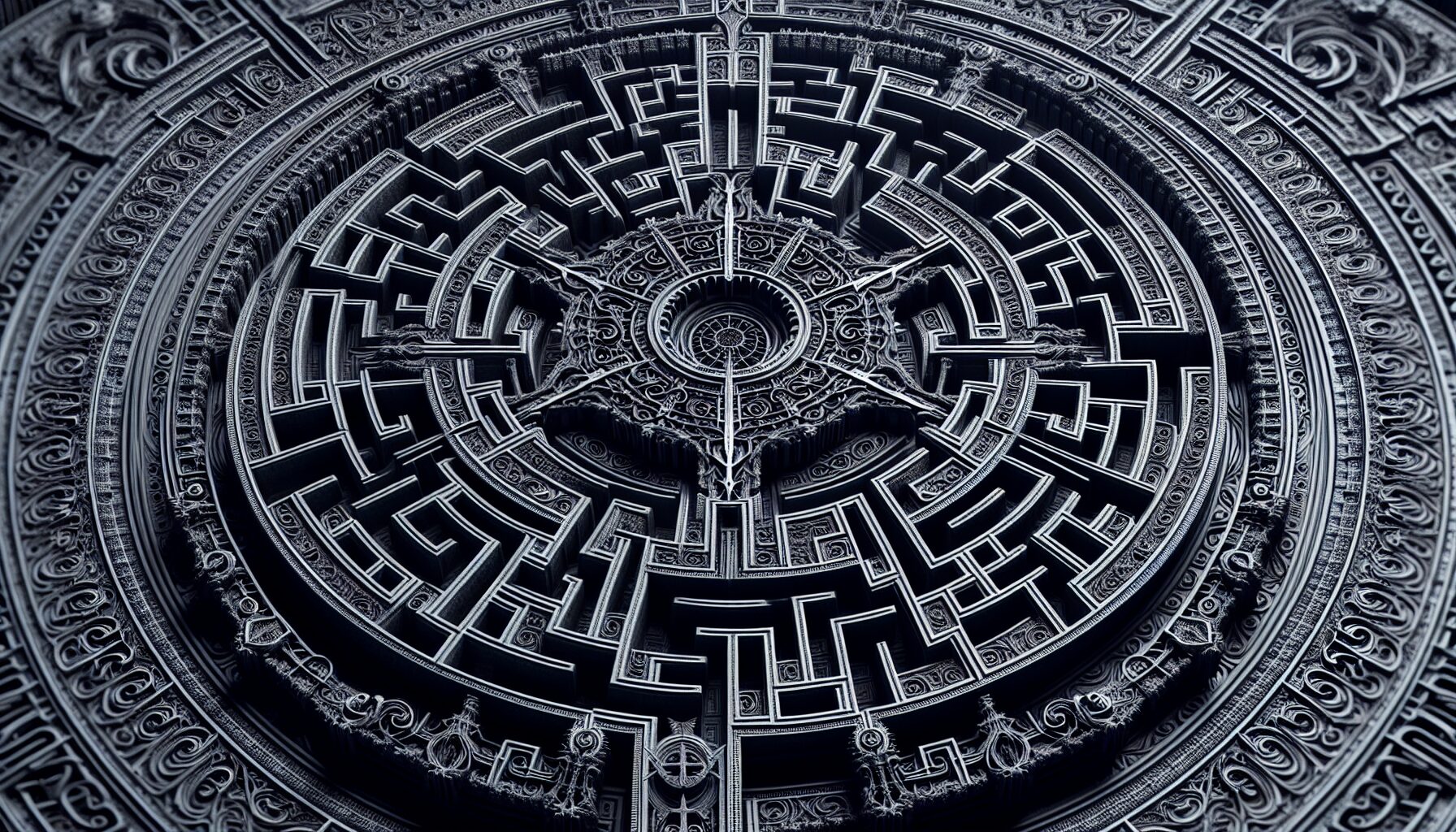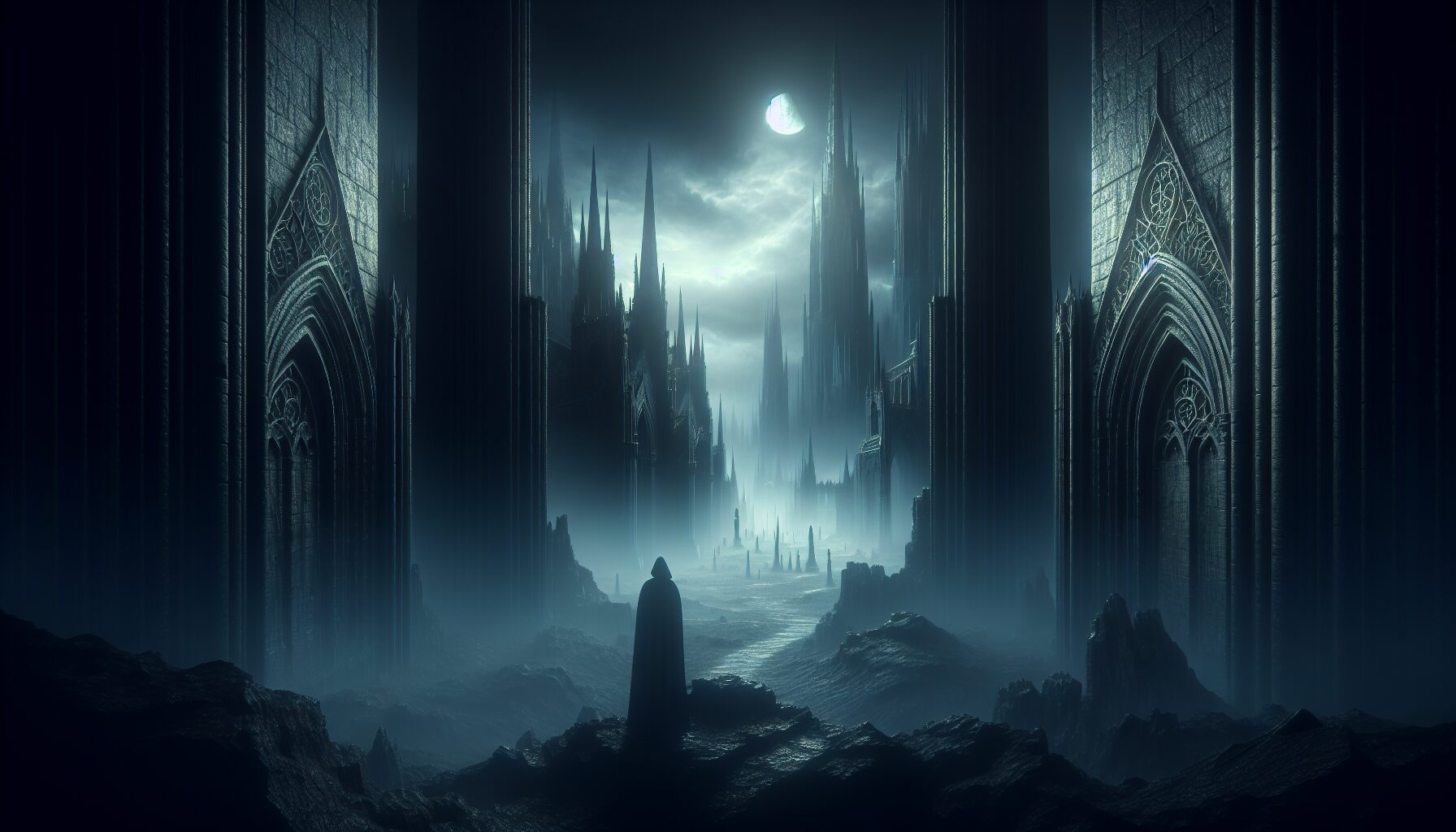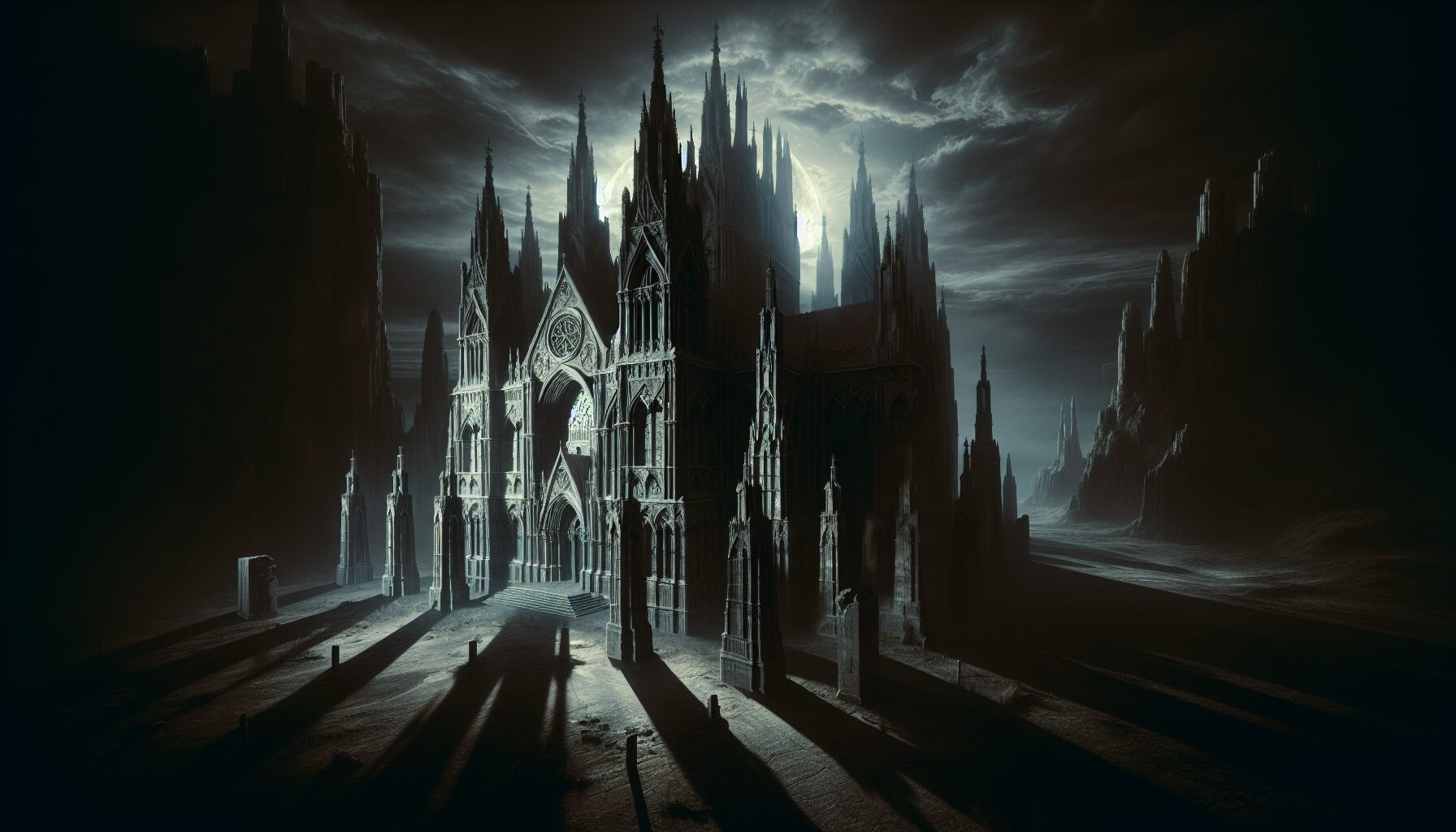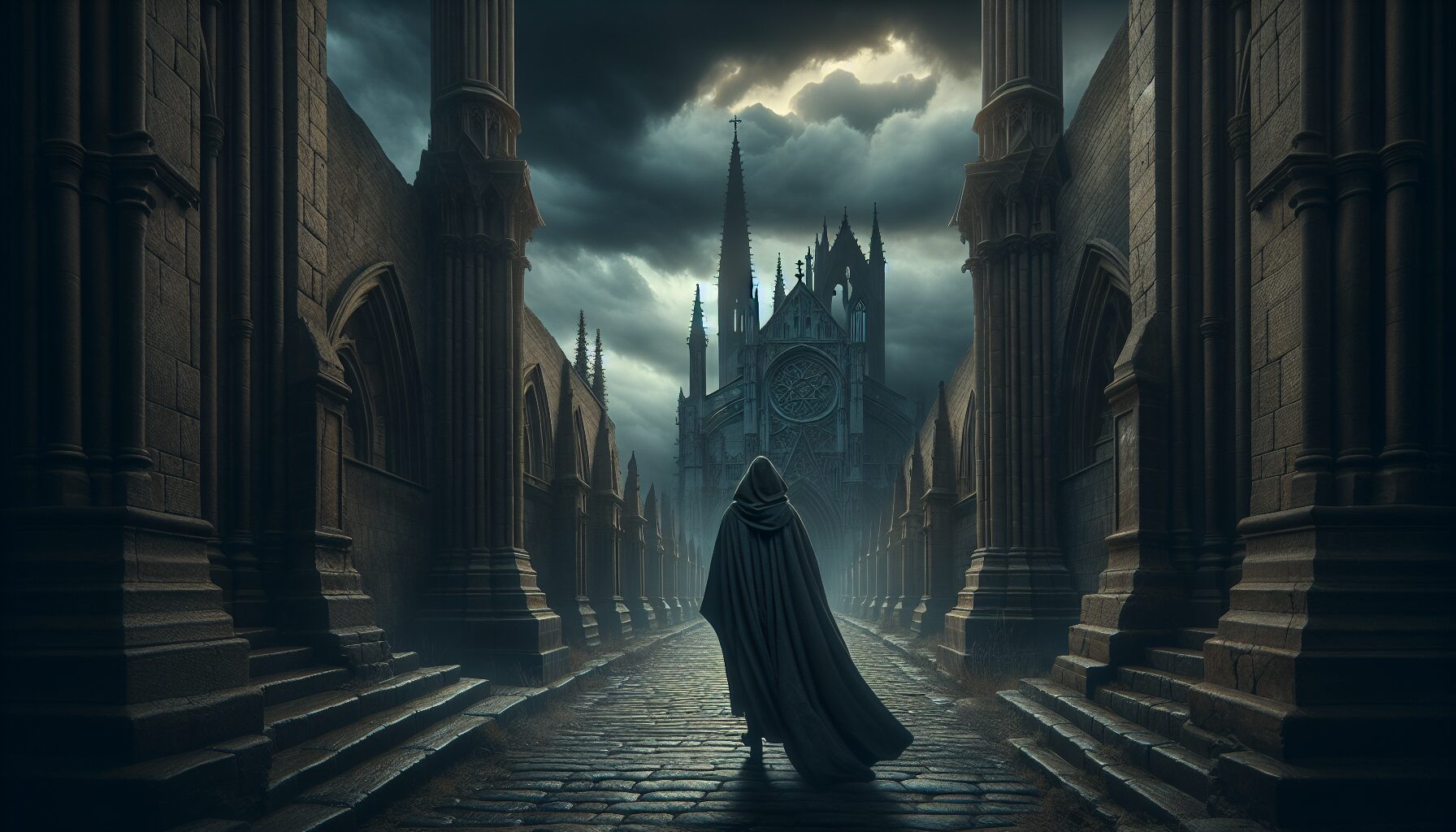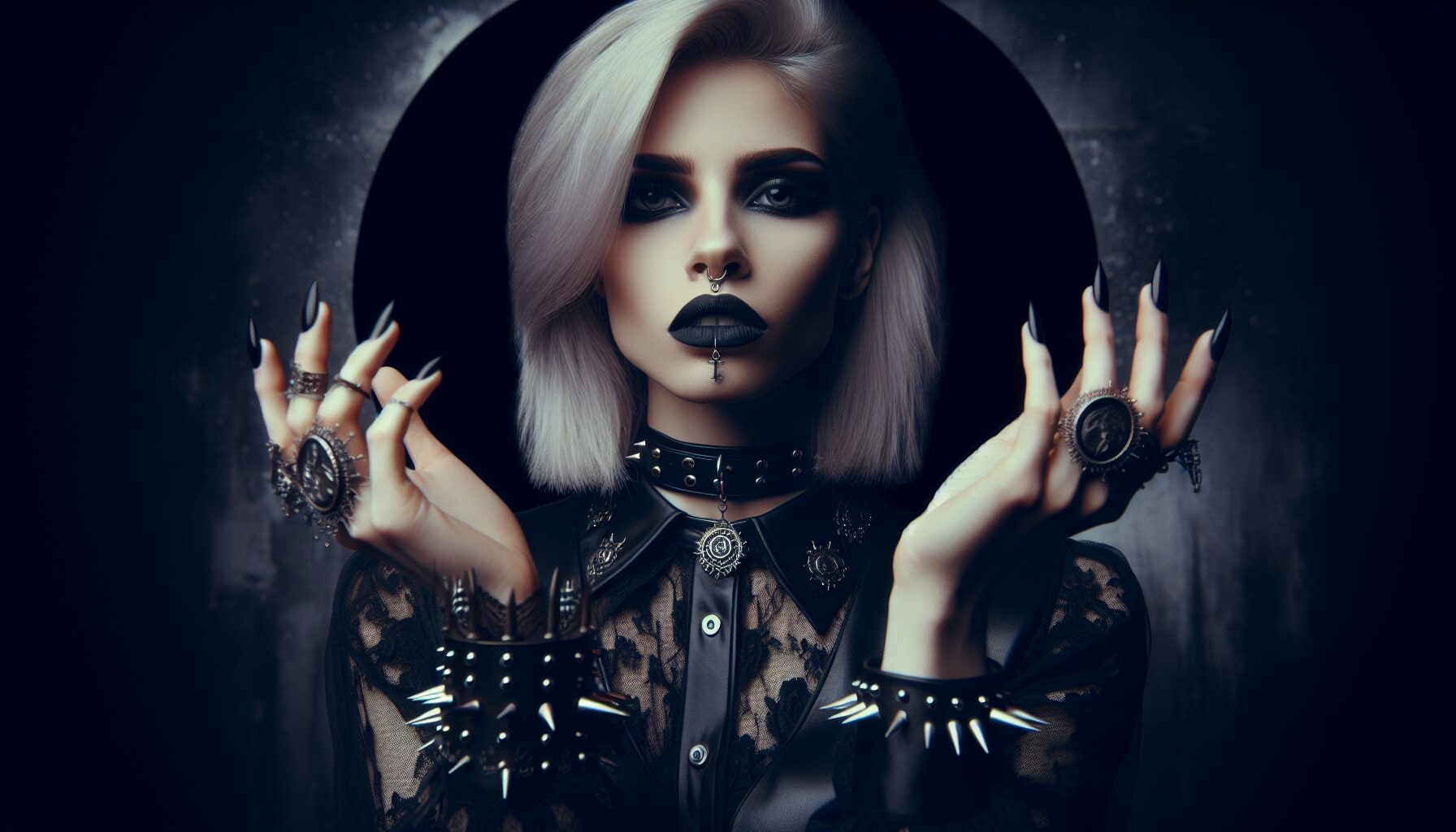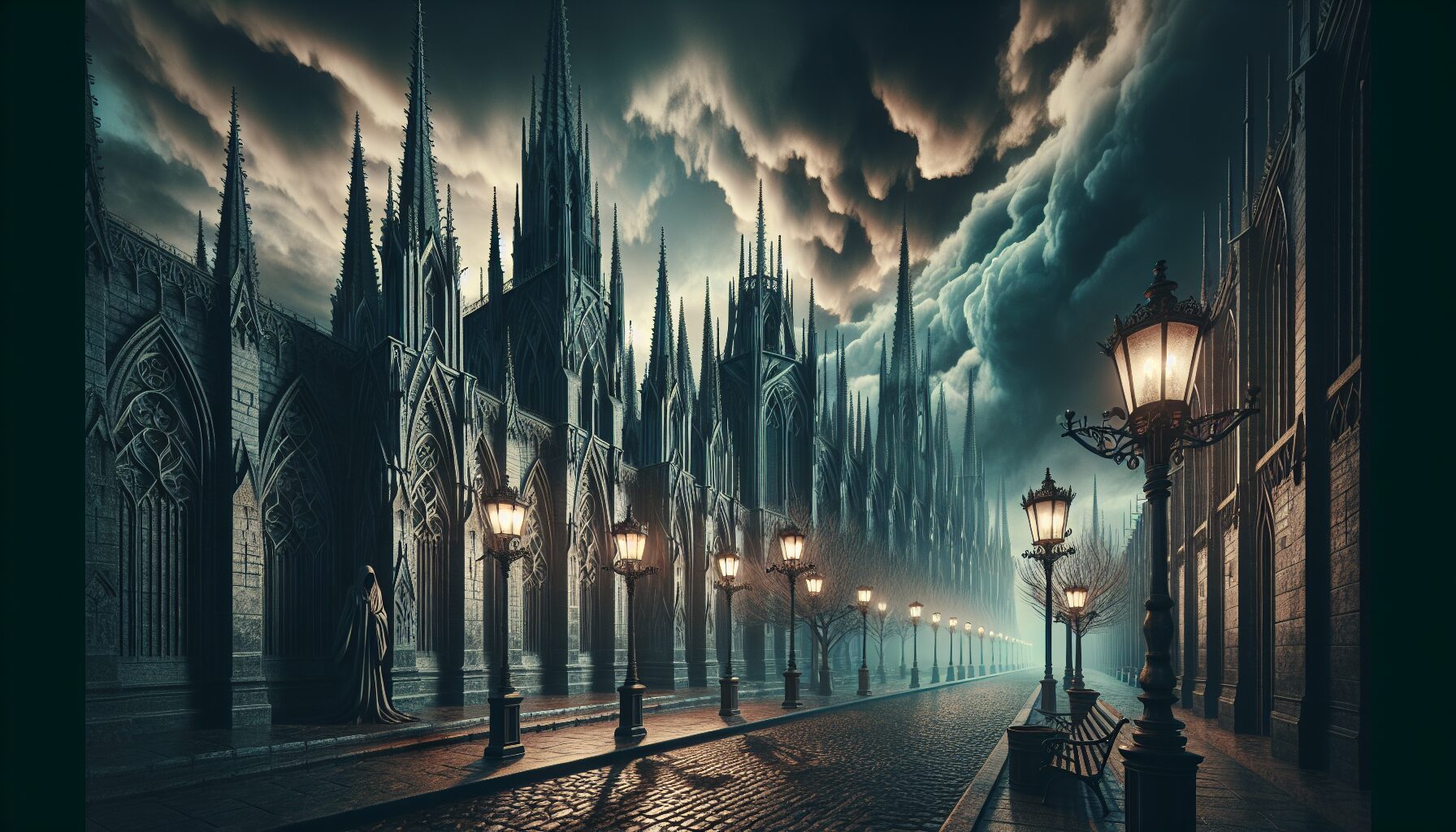The Gothic genre, intertwined with shadows and darkness, has long captivated the human imagination. Its manifestations across art, literature, and philosophy evoke a certain melancholy, a beauty within the bleak. To explore Gothic shadows is to traverse corridors of both fear and fascination, where the interplay of light and shade defines existence itself.
The Birth of the Gothic Imagination
Originating in the late 18th century, the Gothic movement marked a response to the Enlightenment’s emphasis on reason and science. With its roots tracing back to medieval structures, the term “Gothic” was initially used derisively to refer to what was perceived as medieval barbarism. However, a fascination with the mysterious and the supernatural soon transformed the word into a badge of creativity and liberation.
“The Gothic…stands at the anxious intersection of the Enlightenment and Romanticism, the point at which the rational and anti-rational, the natural and supernatural, exist together.” – Jerrold E. Hogle
Gothic Art: A Dance of Light and Shadow
The visual arts played a pivotal role in the development of the Gothic tradition. The architecture of medieval cathedrals, with their towering spires and intricate stained glass, embodied a duality that hinted at the divine through darkness. The Notre-Dame de Paris and Westminster Abbey stand as testaments to this artistic ethos, where stone and shadow merge into ethereal beauty.
Gothic painting and sculpture, characterized by their emotional depth and dramatic contrasts, often depicted haunting scenes of decay and mortality. Artists like Johann Heinrich Füssli, known for his painting The Nightmare, and Caspar David Friedrich, with works such as Monk by the Sea, captured the Gothic sensibility through a lens of sublime terror and beauty.
- Füssli’s “The Nightmare” – A chilling vision that delves into the subconscious fears of humanity.
- Friedrich’s landscapes – Scenes where isolation and the raw power of nature blend into a philosophical exploration of the human condition.
The Literary Tradition: Castles in Twilight
The Gothic novel emerged as a staple of the genre, encapsulating the era’s taste for the morbid and the mysterious. Horace Walpole‘s The Castle of Otranto, often cited as the first Gothic novel, sets the stage with its archaic settings and spectral occurrences.
Following Walpole, emerged a cadre of writers who would define the Gothic narrative through masterful storytelling:
- Mary Shelley’s “Frankenstein” (1818) – A profound inquiry into the dangers of unchecked ambition and the responsibilities of creation.
- Edgar Allan Poe – Renowned for his haunting tales and poems, Poe infused American Gothic with themes of madness and macabre.
- Emily Brontë’s “Wuthering Heights” (1847) – A stark portrayal of passion and revenge set against the desolate North York Moors.
As literature continued through different epochs, the Gothic trope evolved yet remained steadfast in its exploration of human nature through horror and romance. Modern writers such as Stephen King and Anne Rice continue to draw inspiration from these dark antecedents.
Philosophical Underpinnings: Shadows of the Soul
The Gothic tradition also provides fertile ground for philosophical exploration. Shadows, as metaphors for the unknown and the unconscious, invite introspection and existential inquiry.
Danish philosopher Søren Kierkegaard, often associated with existentialism, delved into themes resonant with the Gothic. His concept of “angst” captures the eerie sense of dread and freedom apparent in Gothic stories. The human confrontation with choice, infinity, and insignificance resonated with the Gothic aura of foreboding uncertainty.
In literature, the Gothic is a manifestation of philosophical dualities, the intersection of rationalism and romanticism that challenges the reader to find solace in paradox. According to philosopher Julia Kristeva, the Gothic “is less about what is horrifying, and more about bringing attention to the crevices and shadows of the self, where fear and awe reside as bedfellows.”
The Cultural Legacy of Gothic Shadows
The Gothic continues to influence culture today, from cinema to fashion, painting vivid pictures of otherworldly grotesqueries and the sublime. The resurgence of Gothic aesthetics in popular culture attests to its enduring appeal, transcending time to offer a mirror to the depths of the human soul.
The Guardian describes modern Gothic literature as a lens through which to address contemporary societal anxieties, using the eerie and the supernatural to explore themes of identity, belonging, and fear.
Conclusion: Embracing the Darkness
Gothic shadows, fraught with tension and teeming with life, remain an invaluable component of artistic and philosophical discourse. Whether through the crenellated towers of crumbling castles or the flickering candlelight illuminating dusty tomes, the Gothic endures, ever-present and always reaching toward the sublime beyond the shadows.
The power of the Gothic lies not just in its ability to terrify but in its capacity to invite reflection on what it means to be human. As we stand at the precipice of our own fears and desires, the Gothic whispers to us from the shadows, urging a deeper appreciation for the beauty found within darkness.

